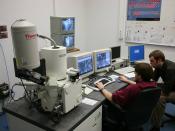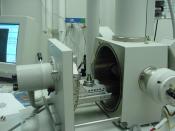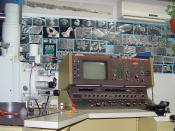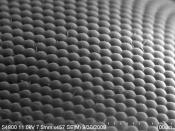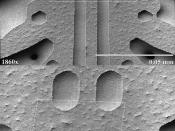As a boy, James Hillier thought he would like to be a commercial artist. Instead, he turned out to have a talent for mathematics and physics, and won a science scholarship to the University of Toronto. There, he and fellow student Albert Prebus invented the world's first practical electron microscope.
Electron microscopes work by focusing a beam of electrons, rather than a beam of light. The wavelength of electrons is much smaller than the wavelength of light, enabling greater magnification and depth of focus. In 1938, Hillier and Prebus produced a microscope that worked by passing a beam of electrons through a carefully prepared sample. The beam was then focused on a photographic plate. Their device-magnified objects to 7,000 times their size C optical microscopes produced a magnification of only 2,000 times. A few years later, Hillier and two other physicists developed what was arguably the first scanning electron microscope.
This worked by scanning the object with a beam of electrons to produce an image similar to the one on a television screen.
After he retired, Hillier devoted himself to promoting science education. He now gives talks to high school students about careers in science. Because he would never have been able to go to university without scholarships, he established the James Hillier Foundation, which awards scholarships to promising science students in his hometown of Brantford. The foundation supports 10 science students in their pursuit of university education with $5,000 annually. His work has brought him many honors, including the Order of Canada .
